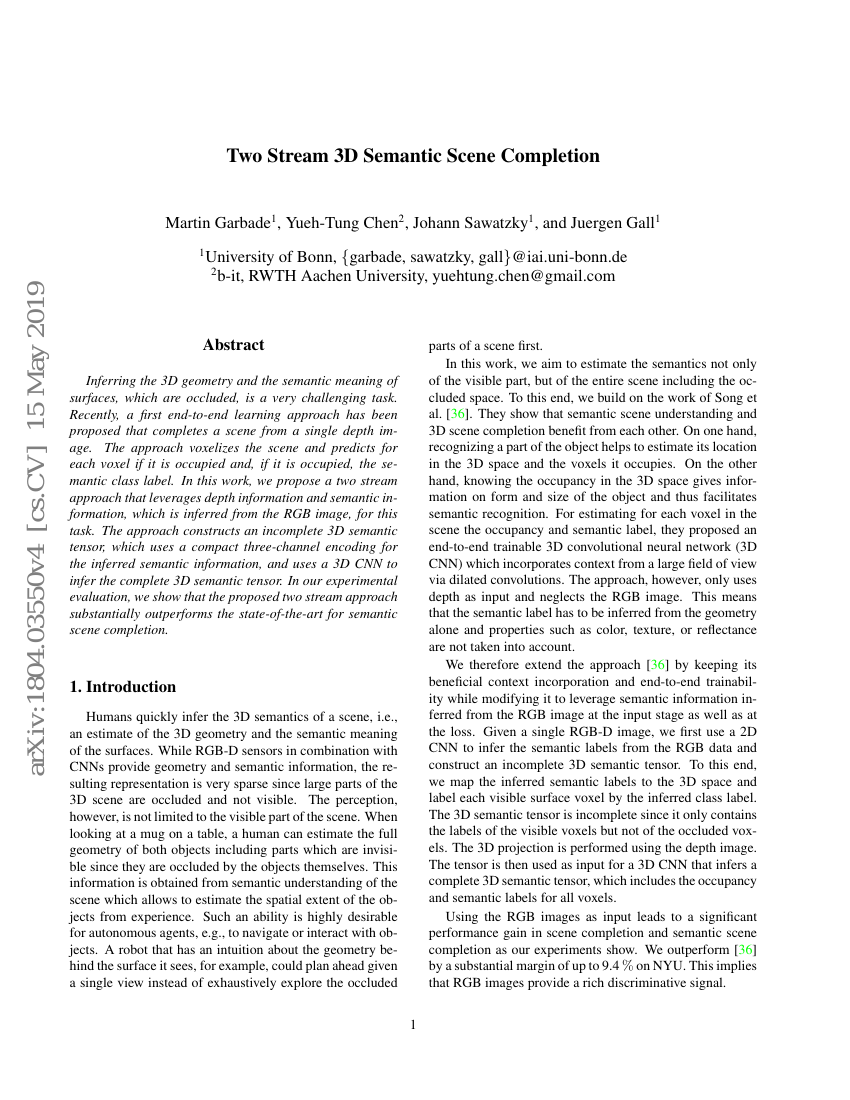Command Palette
Search for a command to run...
Martin Garbade; Yueh-Tung Chen; Johann Sawatzky; Juergen Gall

Abstract
Inferring the 3D geometry and the semantic meaning of surfaces, which are occluded, is a very challenging task. Recently, a first end-to-end learning approach has been proposed that completes a scene from a single depth image. The approach voxelizes the scene and predicts for each voxel if it is occupied and, if it is occupied, the semantic class label. In this work, we propose a two stream approach that leverages depth information and semantic information, which is inferred from the RGB image, for this task. The approach constructs an incomplete 3D semantic tensor, which uses a compact three-channel encoding for the inferred semantic information, and uses a 3D CNN to infer the complete 3D semantic tensor. In our experimental evaluation, we show that the proposed two stream approach substantially outperforms the state-of-the-art for semantic scene completion.
Benchmarks
| Benchmark | Methodology | Metrics |
|---|---|---|
| 3d-semantic-scene-completion-on-nyuv2 | TS3D | mIoU: 34.1 |
| 3d-semantic-scene-completion-on-semantickitti | TS3D (Reported in SemanticKITTI dataset paper) | mIoU: 9.5 |
| 3d-semantic-scene-completion-on-semantickitti | TS3D+DNet+SATNet (Reported in SemanticKITTI dataset paper) | mIoU: 17.7 |
| 3d-semantic-scene-completion-on-semantickitti | TS3D+DNet (Reported in SemanticKITTI dataset paper) | mIoU: 10.2 |
Build AI with AI
From idea to launch — accelerate your AI development with free AI co-coding, out-of-the-box environment and best price of GPUs.